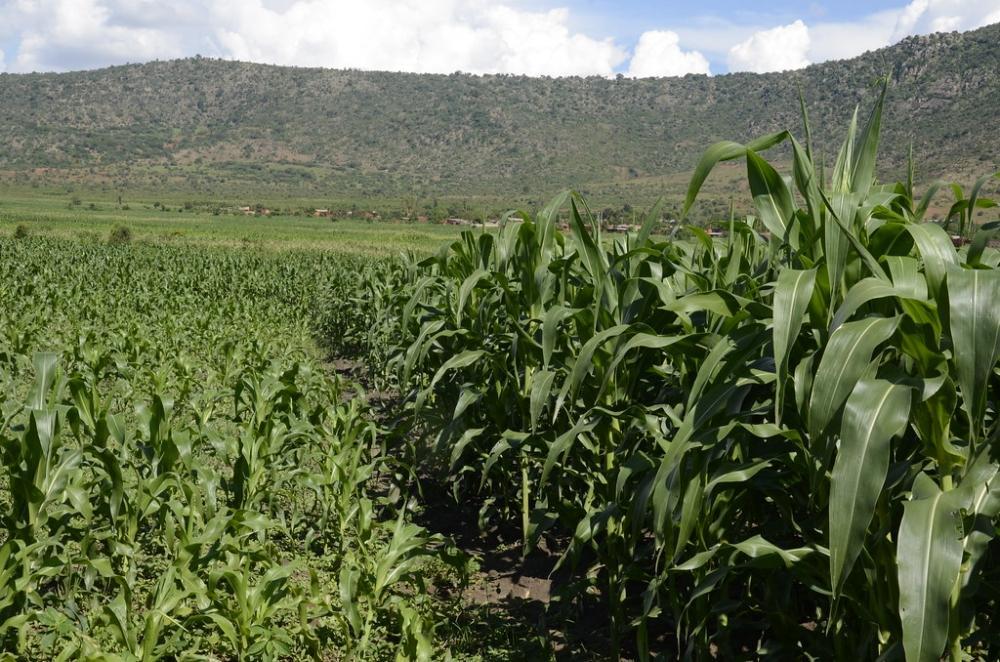Africa-Press – Rwanda. In 2019, Christophe Rwisumbura, a farmer from Nasho Sector in Nyagatare District, lost 65 per cent of his maize harvest, estimated at around seven tonnes , due to fall armyworms that had broken out across the country.
However, Rwisumbura is now optimistic about defeating the pests, as Rwanda is set to launch piloting of drought and fall armyworm-resistant biotech maize varieties in Nyagatare and Huye Districts.
The fall armyworm is an insect pest that feeds on more than 80 crop species, causing damage to cereals such as maize, rice, and sorghum, as well as to legumes, among others.
In Rwanda, the fall armyworm was first suspected in February 2017 in the Mushishito wetland in Nyamagabe District, and was confirmed the following month by the Ministry of Agriculture.
By the end of April 2017, the outbreak had been reported in all 30 districts of the country.
To this day, Rwisumbura is among millions of maize farmers still struggling to combat the pest.
The 2020 Agricultural Household Survey (AHS 2020) shows that 67.7 per cent of crop-producing households in Rwanda cultivate maize.
There are about 2.1 million crop-farming households, meaning that approximately 1.4 million households grow maize.
“Without preventive measures, 65 per cent of the expected harvest can be completely lost. For instance, in one case, yields can decrease from seven tonnes to about three tonnes,” he recounted.
He added that some fall armyworms have developed resistance to certain pesticides, on which farmers spend significant sums.
By 2023, farmers reported that the pest had developed resistance to commonly used products, including Rocket pesticide.
This prompted authorities to advise alternating different pesticide types each season to delay resistance.
“We are currently trying other types of pesticide since Rocket is no longer effective in Rwanda. The rocket was also harming biodiversity. We are buying a kilogram of the pesticides we now use at Rwf 11,500 per litre. We start spraying two weeks after planting, spray again after 22 days, and then after one month. When the maize starts tasseling and silking, we spray again,” he explained.
Evariste Tugirinshuti, President of the Rwanda Maize Farmer Cooperatives Federation, said the rising cost of pesticides could cause some farmers to lose the battle against fall armyworms.
“A litre of Rocket pesticide currently costs Rwf 14,000. A small bottle that previously cost Rwf 1,200 is now sold at Rwf 2,000,” said Emmanuel Nzabarinda, a farmer from Kirehe District.
“When not controlled, it can cause severe damage and substantial yield losses, depending on the stage of attack, crop variety, environmental conditions, and the intensity of infestation,” said Athanase Hategekimana, a scientist in charge of the crop protection programme at the Rwanda Agriculture and Animal Resources Development Board (RAB).
He explained that with moderate infestation, a farmer can lose between 5 per cent and 20 per cent of maize yield, while with severe infestation, losses can range from 60 per cent to 100 per cent in some cases.
“Currently, all districts have fall armyworm problems. Since the pest is becoming resistant to pesticides, farmers have to alternate types. You can use one type for one phase, and a different one in the next,” he noted.
The fall armyworm was first reported in West Africa (Nigeria, São Tomé, Benin and Togo) in January 2016.
Between December 2016 and March 2017, it was reported in several countries in Southern Africa (South Africa, Zimbabwe, Zambia, Eswatini, Malawi, Mozambique and Namibia), Central Africa (DR Congo) and Eastern Africa (Tanzania, Uganda, Kenya and Rwanda).
Two sites set for resistant biotech-maize piloting in Rwanda
Léonce Dusengemungu, Programme Coordinator for the five-year Rwanda Agricultural Biotechnology Programme for Cassava, Maize and Potato crops, said biotech maize confined field trials will be conducted in Nyagatare District and at Rubona station in Huye District.
“Meanwhile, biotech potato CFTs will be conducted in Rwerere in Burera District, Nyamagabe District, and Musanze District (ongoing trials). Biotech cassava confined field trials are ongoing in Mututu (Nyanza District), Musenyi (Bugesera District), and Rubona (Huye District),” he said.
He explained that RAB scientists based on the specific crops and their cultivation zones selected the sites.
“The selection also aligns with the requirement for multi-location trials as mandated by the Rwanda Environment Management Authority (REMA) for the National Performance Trials (NPTs),” he noted.
For biotech maize trials, RAB scientists are awaiting approval to initiate multi-location trials at the remaining confined field trials sites.
“The necessary infrastructure at these sites is already in place,” he added.
Dr Sylvester Oikeh, who leads biotech maize development at the African Agricultural Technology Foundation (AATF), noted that Rwanda’s national maize average yield of 1.6 tonnes per hectare is well below the crop’s potential, forcing the country to spend over $23 million annually to import 100,000 tonnes of maize grain.
He said yields can be increased with improved maize varieties that are drought-tolerant and resistant to insect pests.
“They will be available to farmers, pending adaptation trials and approval by regulators,” he said.
“All GMOs approved for use today have passed rigorous safety checks. Scientific studies show that they are as safe as regular foods,” stated REMA.
Amandin Rutayisire, a biosafety specialist at REMA and Rwanda’s Focal Point for the Cartagena Protocol, explained: “Genetically modified or biotech crops should start at research stages under confined field trials, then progress to environmental release for cultivation (stage 2), and later be placed on the market for commercialisation and consumption (stage 3).”
“The biotech crops are monitored at every stage mentioned above, both by REMA and the applicant. If a GMO shows signs of posing significant negative impacts on the environment or human health, the permit shall be temporarily or permanently revoked,” he added.
TELA, or biotech maize, is already being used in South Africa and Nigeria, and is being adopted in other countries as well.
In 2024, Rwanda passed a law on biosafety to regulate GMOs and protect health and the environment. Rwanda is also a member of the Cartagena Protocol, which governs the cross-border movement of GMOs.
The Rwanda Environment Management Authority (REMA) is the national authority responsible for GMO regulation.
On the African continent, there are currently 12 countries with biosafety or GMO-regulating laws: South Africa, Egypt, Sudan, Malawi, Mozambique, Eswatini, Nigeria, Ghana, Burkina Faso, Kenya, Ethiopia and Rwanda, according to the Open Forum on Agricultural Biotechnology (OFAB).
According to the Food and Agriculture Organization of the United Nations (FAO): “GMOs can help by increasing food production, making food more nutritious and accessible, and can be a valuable tool in fighting hunger and malnutrition.”
Africa’s annual food import bill is estimated at US $50 billion, a figure projected to increase significantly if current trends continue. Genetically modified crops are expected to help reduce this import bill.
For More News And Analysis About Rwanda Follow Africa-Press






